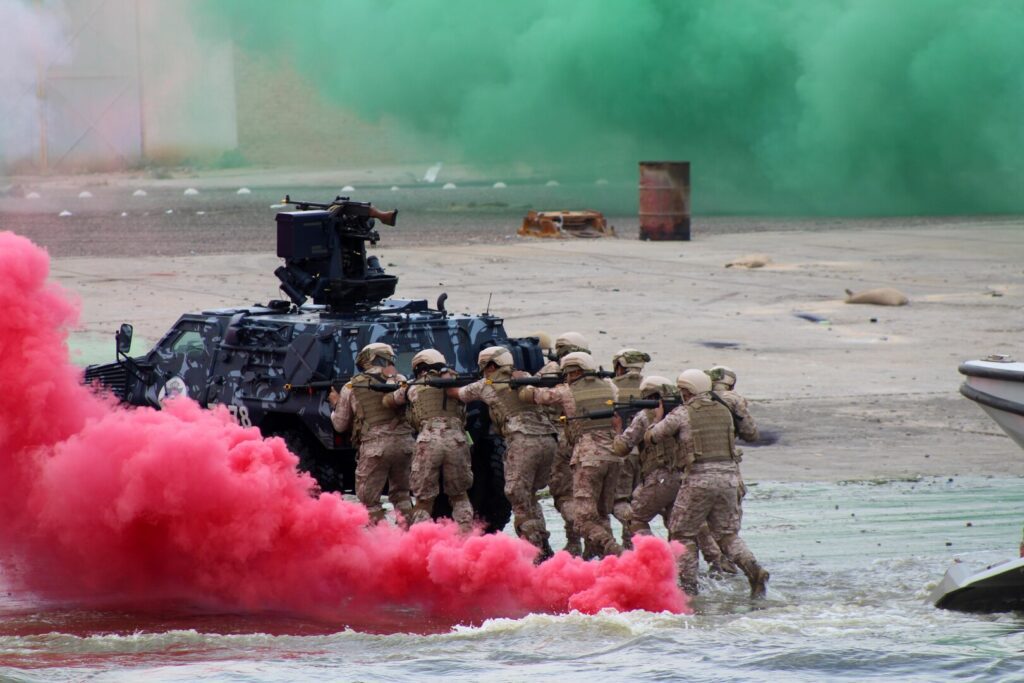Amphibious assaults play a crucial role in naval warfare, requiring meticulous planning and execution for success. In this article, we will explore key strategies for victorious outcomes in these operations. Thorough planning and preparation are essential, involving intelligence gathering and coordination with other military branches. Surprise and deception tactics can help catch the enemy off guard, while air and naval support play a critical role in providing cover and assistance during the assault. Establishing a secure beachhead quickly is paramount, followed by efficient logistics and sustainment to ensure continued success. By implementing these strategies, naval forces can enhance their effectiveness in executing successful amphibious assaults.
Amphibious Assaults: Key Strategies for Success in Naval Warfare
Introduction
Amphibious assaults are a crucial aspect of naval warfare, as they involve the landing of troops and equipment from ships onto shore to establish a beachhead. These operations require precise planning, coordination, and execution to achieve success. In this article, we will discuss some key strategies for success in amphibious assaults.
Planning and Preparation
One of the most important aspects of a successful amphibious assault is thorough planning and preparation. This includes conducting detailed intelligence gathering on the target area, assessing the enemy’s defenses, and identifying potential landing sites. It is also essential to coordinate with other branches of the military, such as the air force and army, to ensure a cohesive and integrated approach to the operation.
Surprise and Deception
Surprise and deception are often key elements in successful amphibious assaults. By keeping the enemy guessing about the timing and location of the attack, it is possible to catch them off guard and gain a strategic advantage. This can involve using decoy operations, false radio transmissions, and other tactics to confuse the enemy and divert their attention away from the actual landing site.
Air and Naval Support
Air and naval support are critical to the success of an amphibious assault. Close coordination between ships, aircraft, and ground troops is essential to provide cover and support during the landing operation. This includes airstrikes to suppress enemy defenses, naval gunfire support to soften up the beachhead, and air transport to deploy troops and equipment onto shore.
Beachhead Establishment
Once troops have landed on shore, it is crucial to quickly establish a secure beachhead to protect against counterattacks and provide a base for further operations. This involves securing the landing site, clearing obstacles, and setting up defensive positions to repel enemy forces. It is also important to quickly bring in additional troops, supplies, and equipment to reinforce the beachhead and expand the operation.
Logistics and Sustainment
Logistics and sustainment are key considerations in amphibious assaults, as they involve managing the flow of troops, equipment, and supplies to support the operation. This includes establishing supply lines, setting up logistics hubs, and coordinating transportation to ensure that troops are properly equipped and supported throughout the operation. It is important to anticipate and plan for logistical challenges, such as inclement weather, rough seas, or enemy interference, to ensure that the operation can be sustained over the long term.
Conclusion
Amphibious assaults are complex and challenging operations that require careful planning, coordination, and execution to achieve success. By following key strategies such as thorough planning and preparation, surprise and deception, air and naval support, beachhead establishment, and logistics and sustainment, naval forces can increase their chances of success in amphibious assaults and achieve their objectives on the battlefield.
